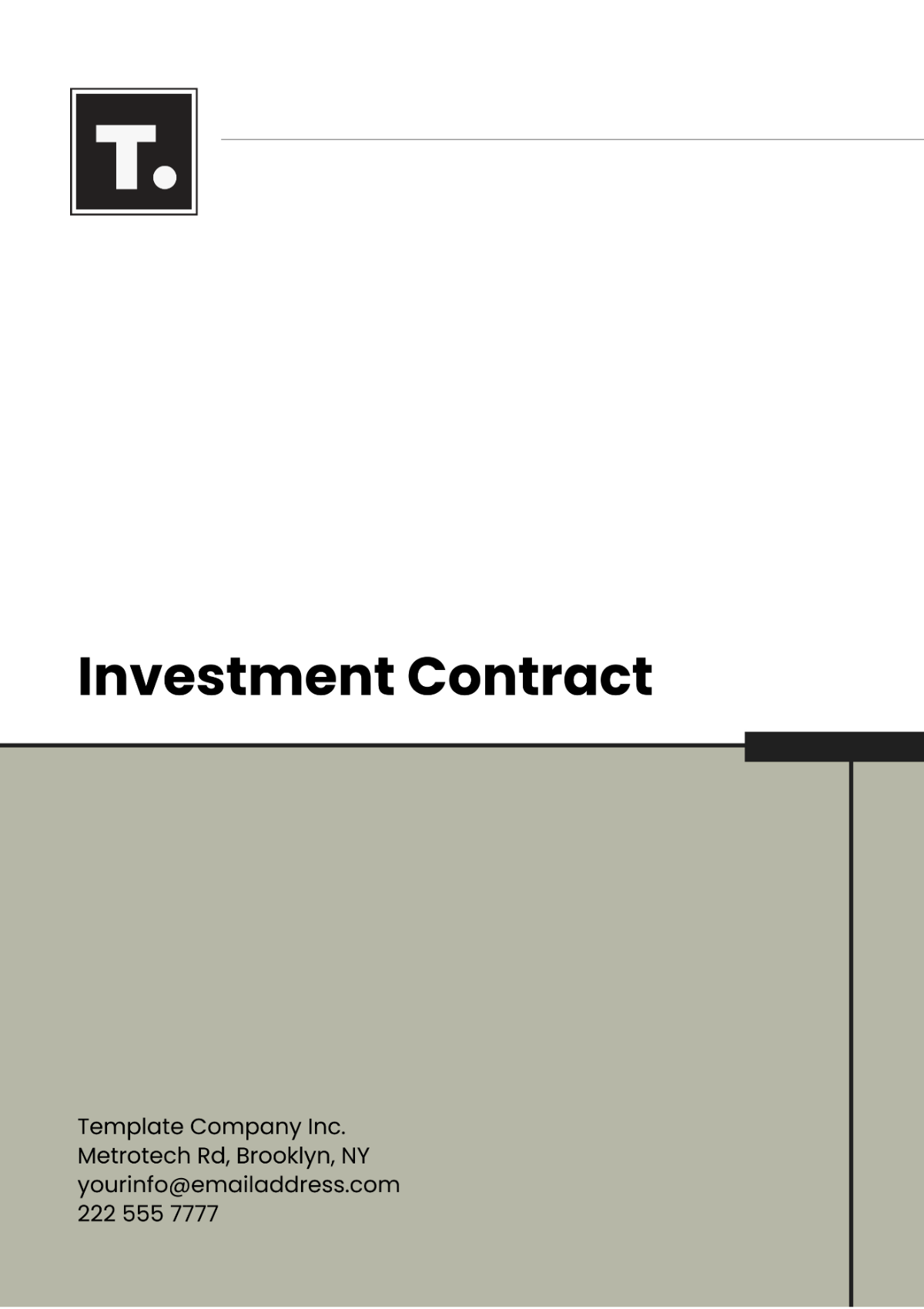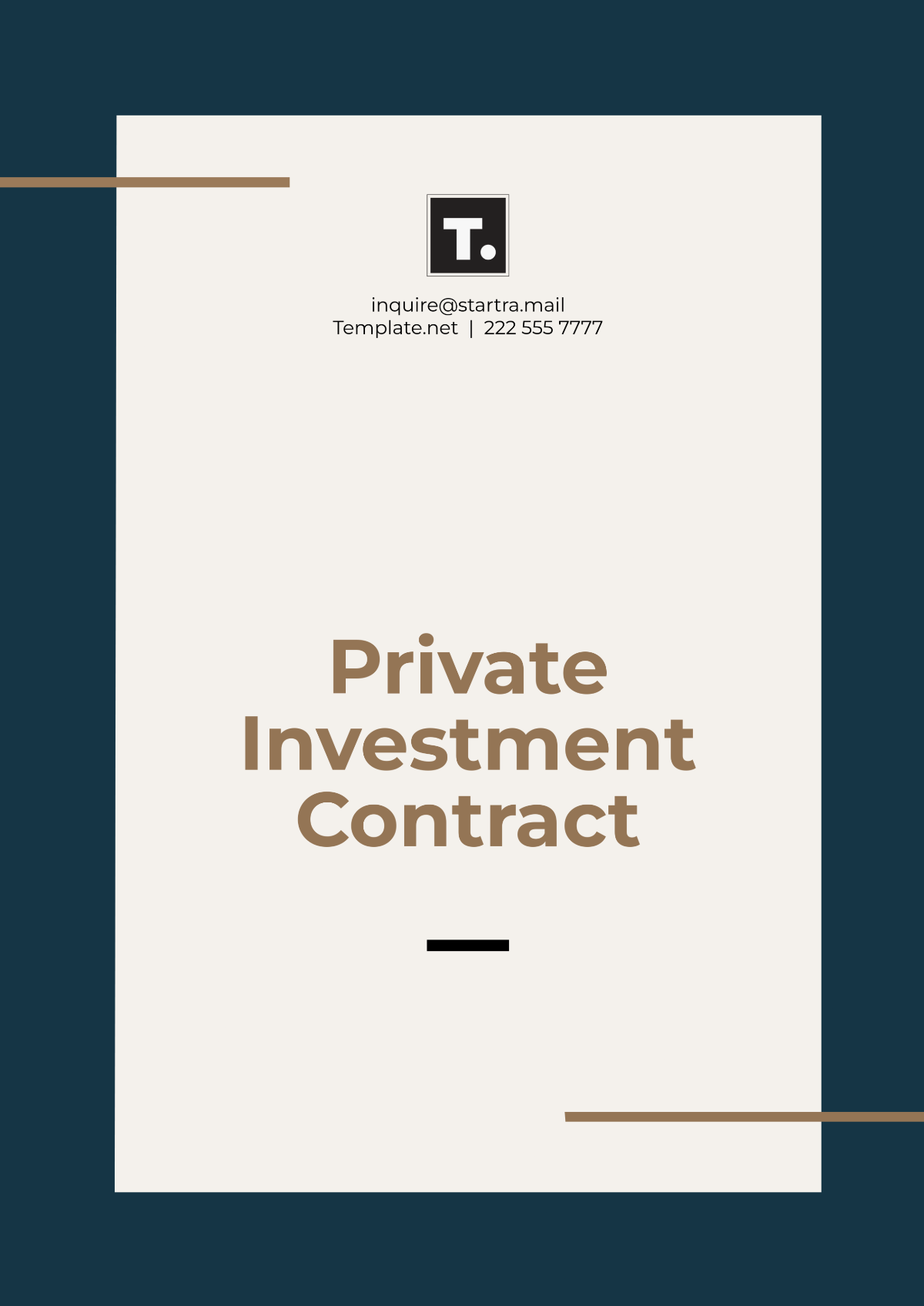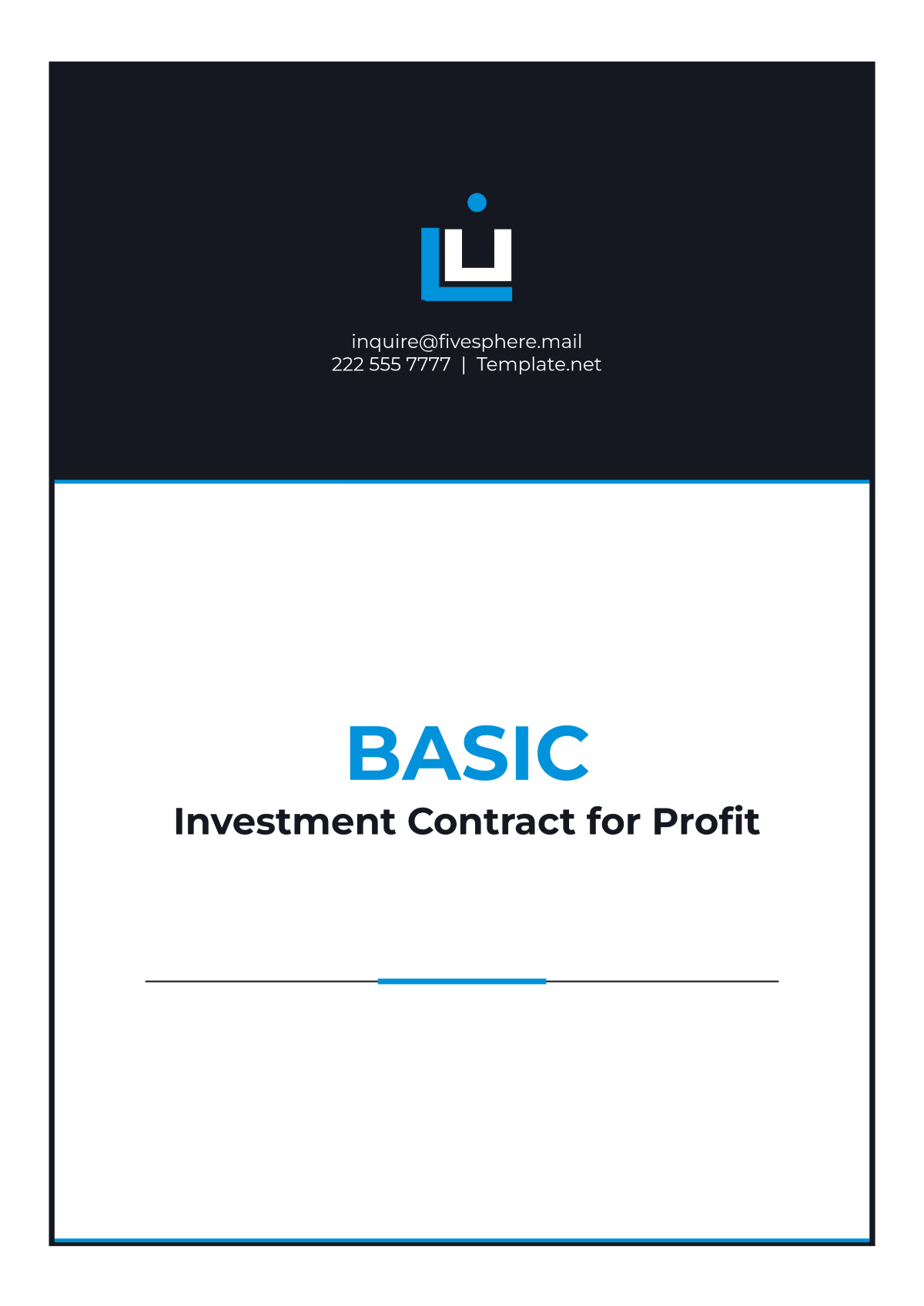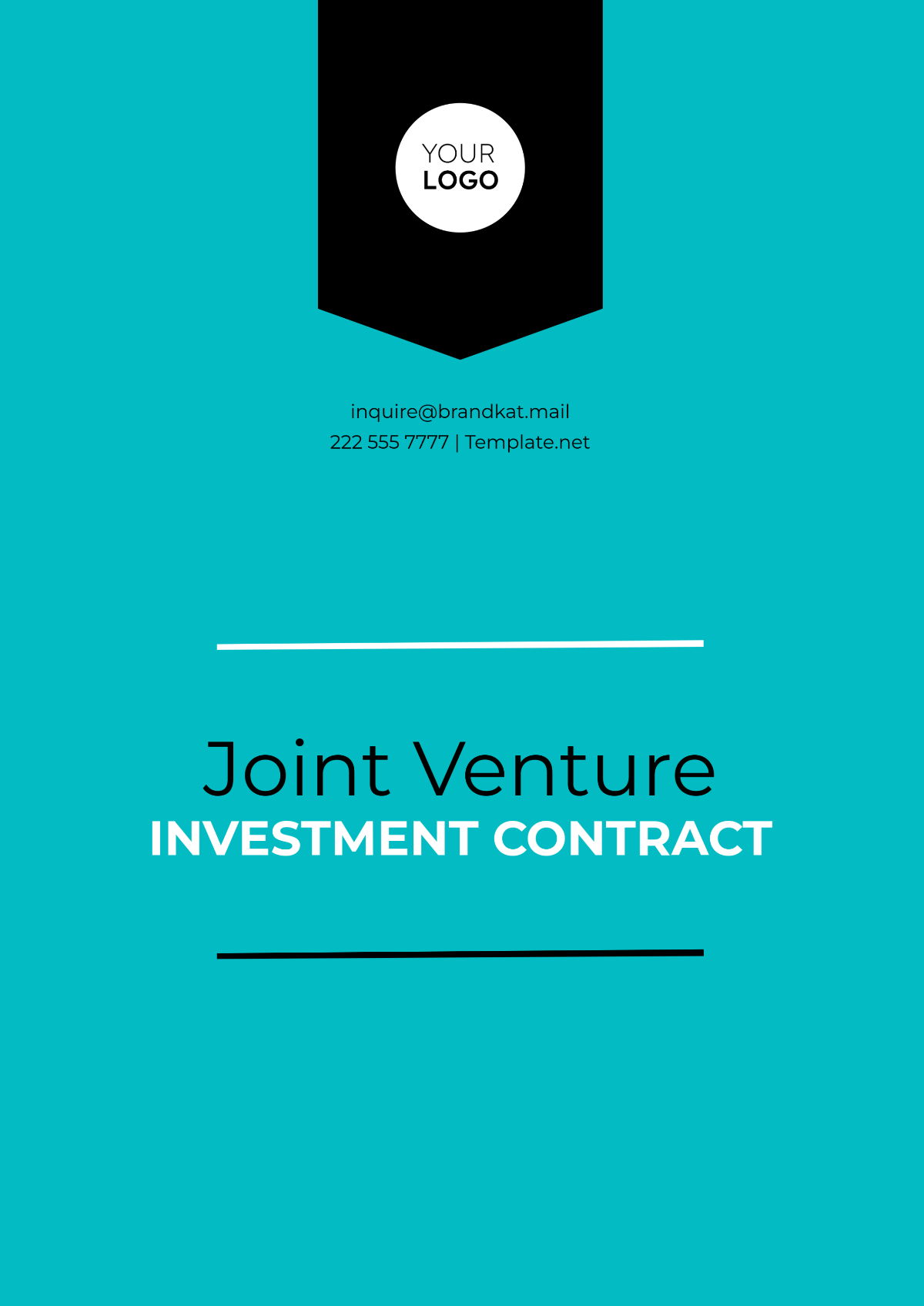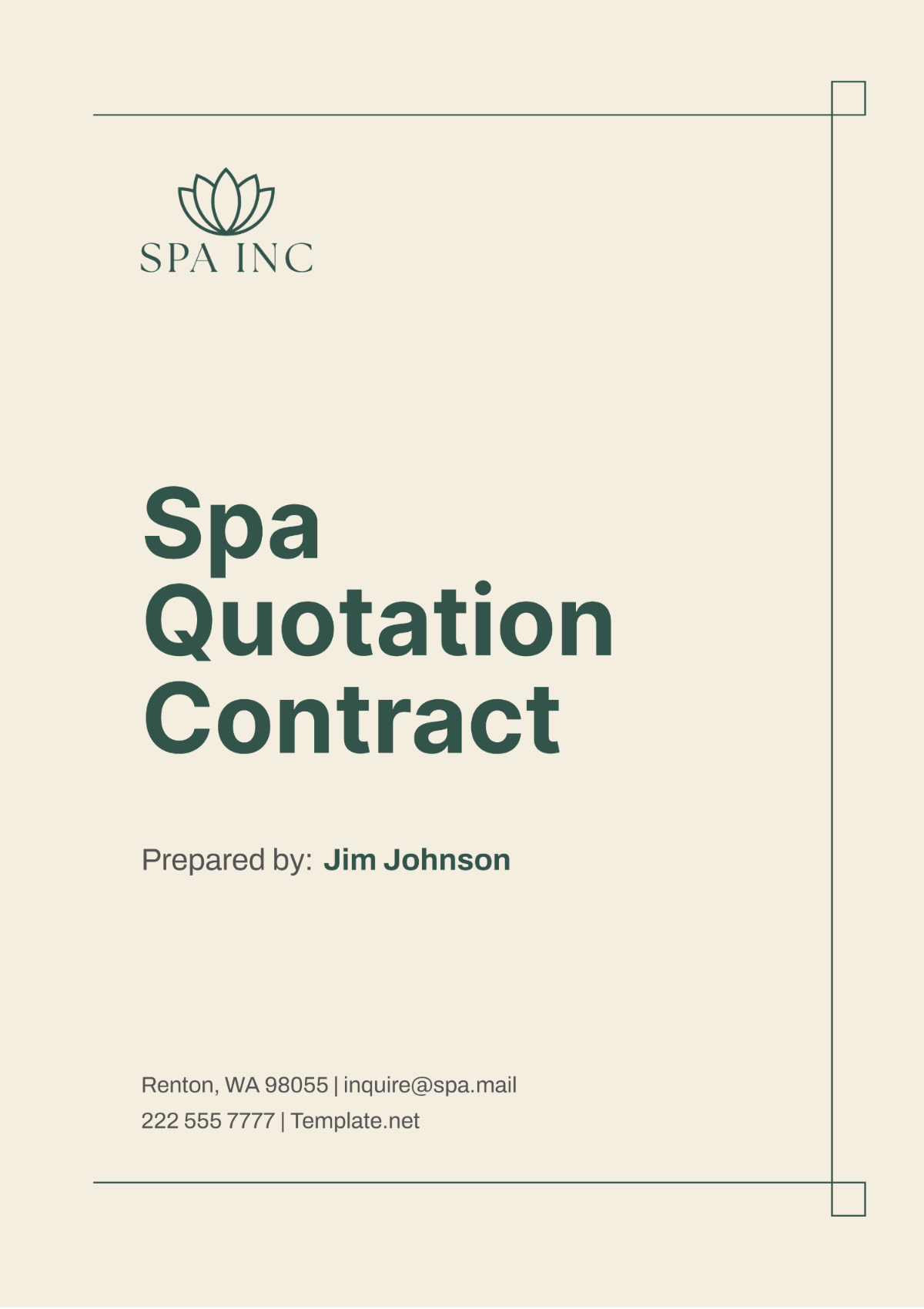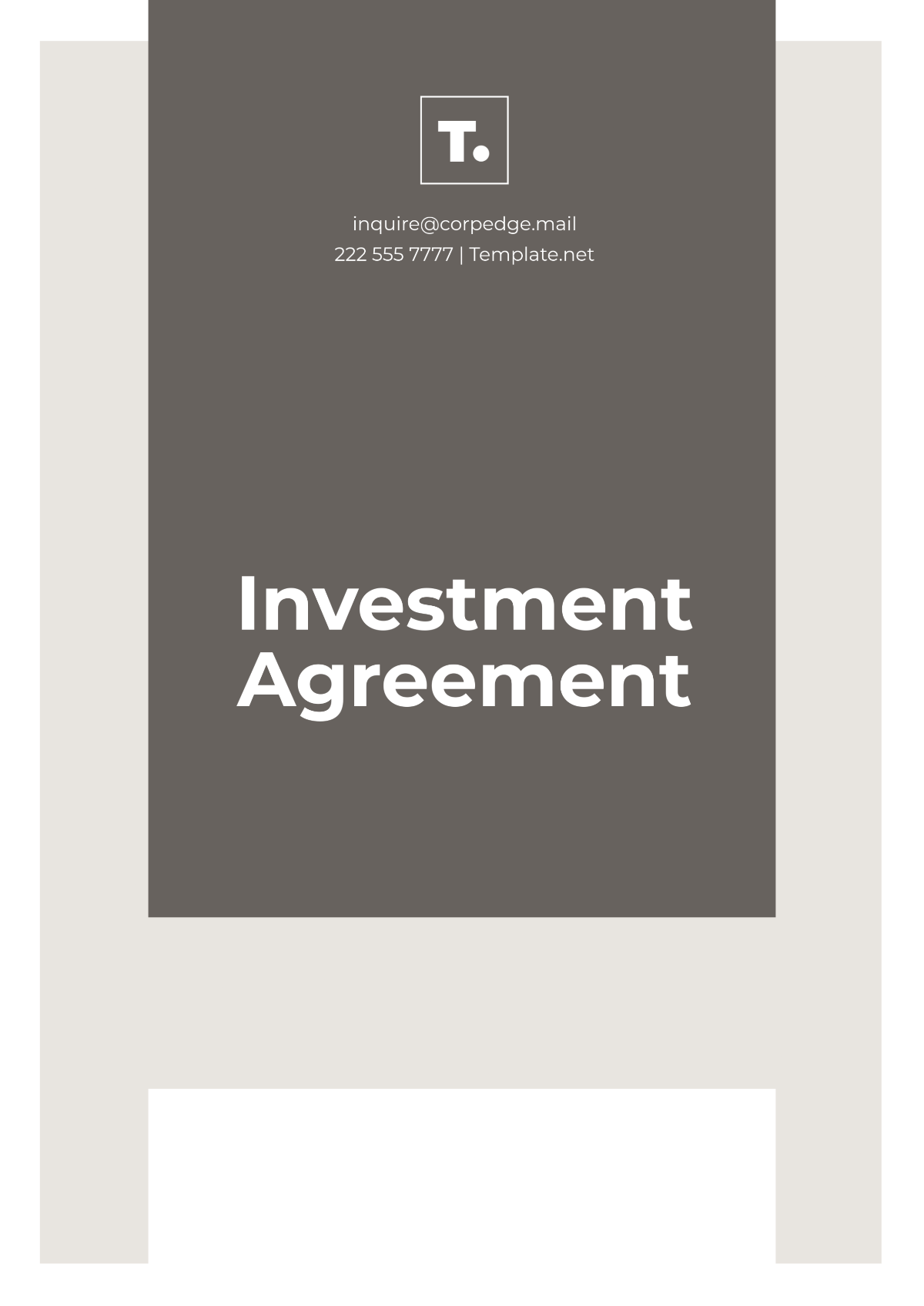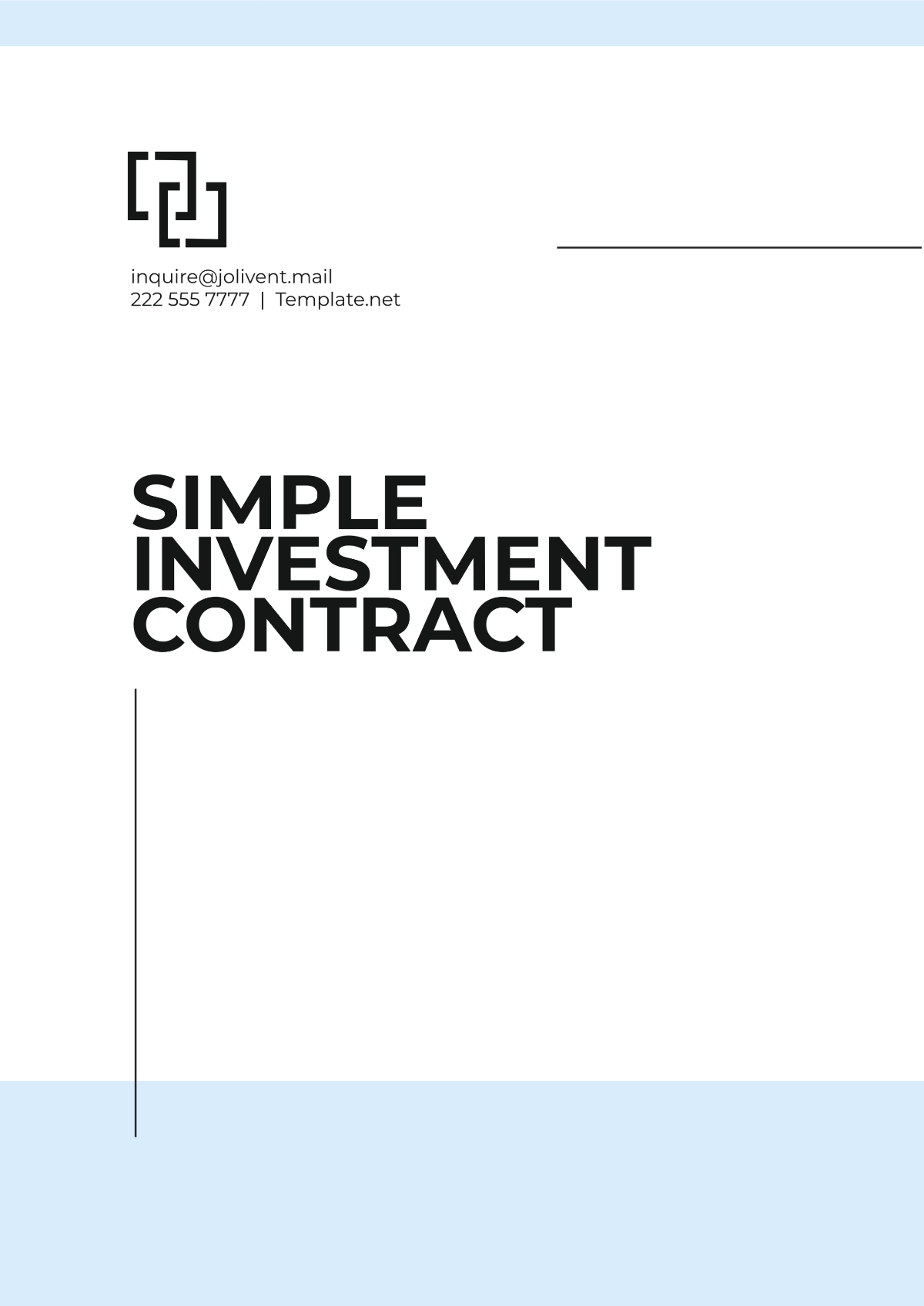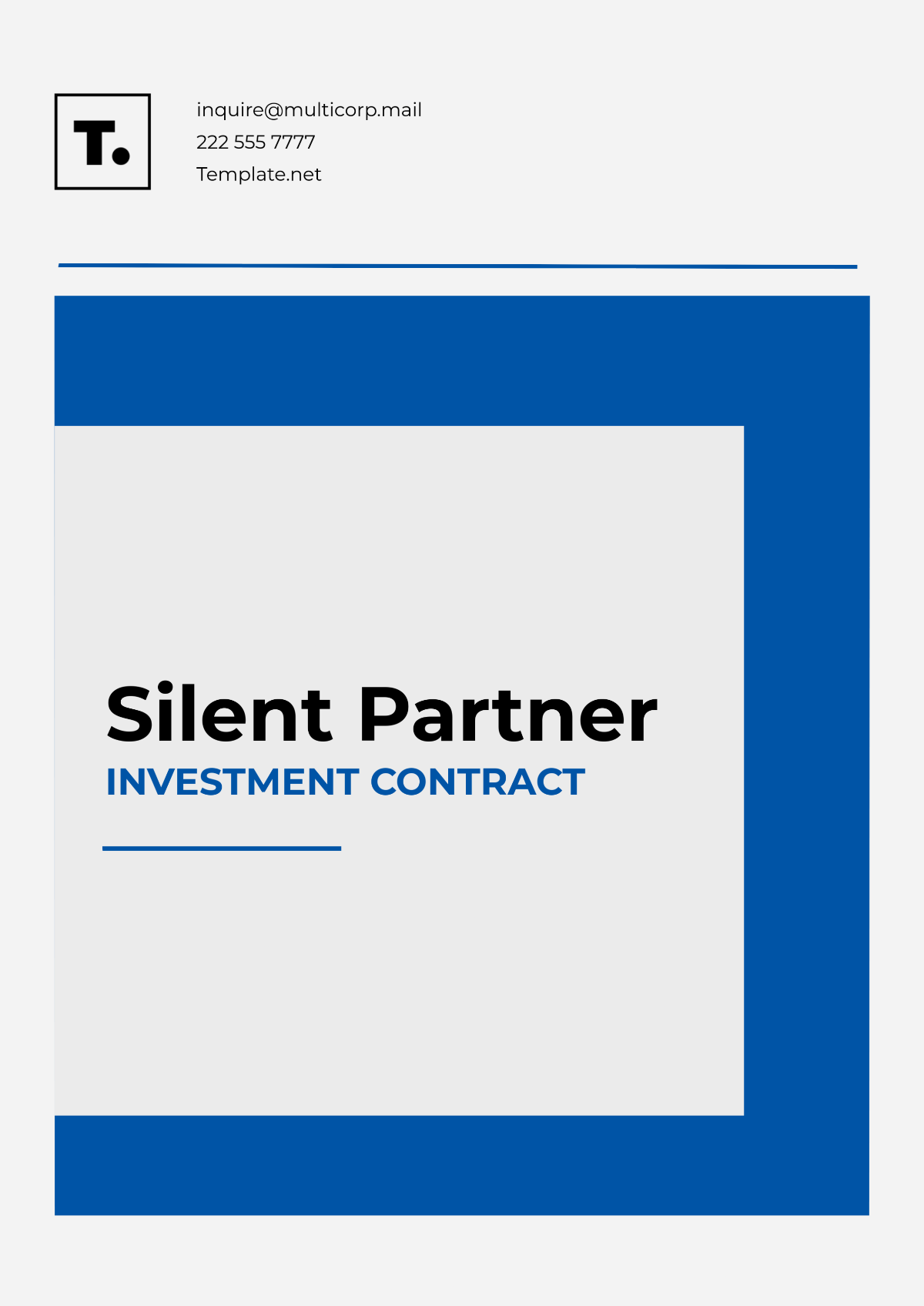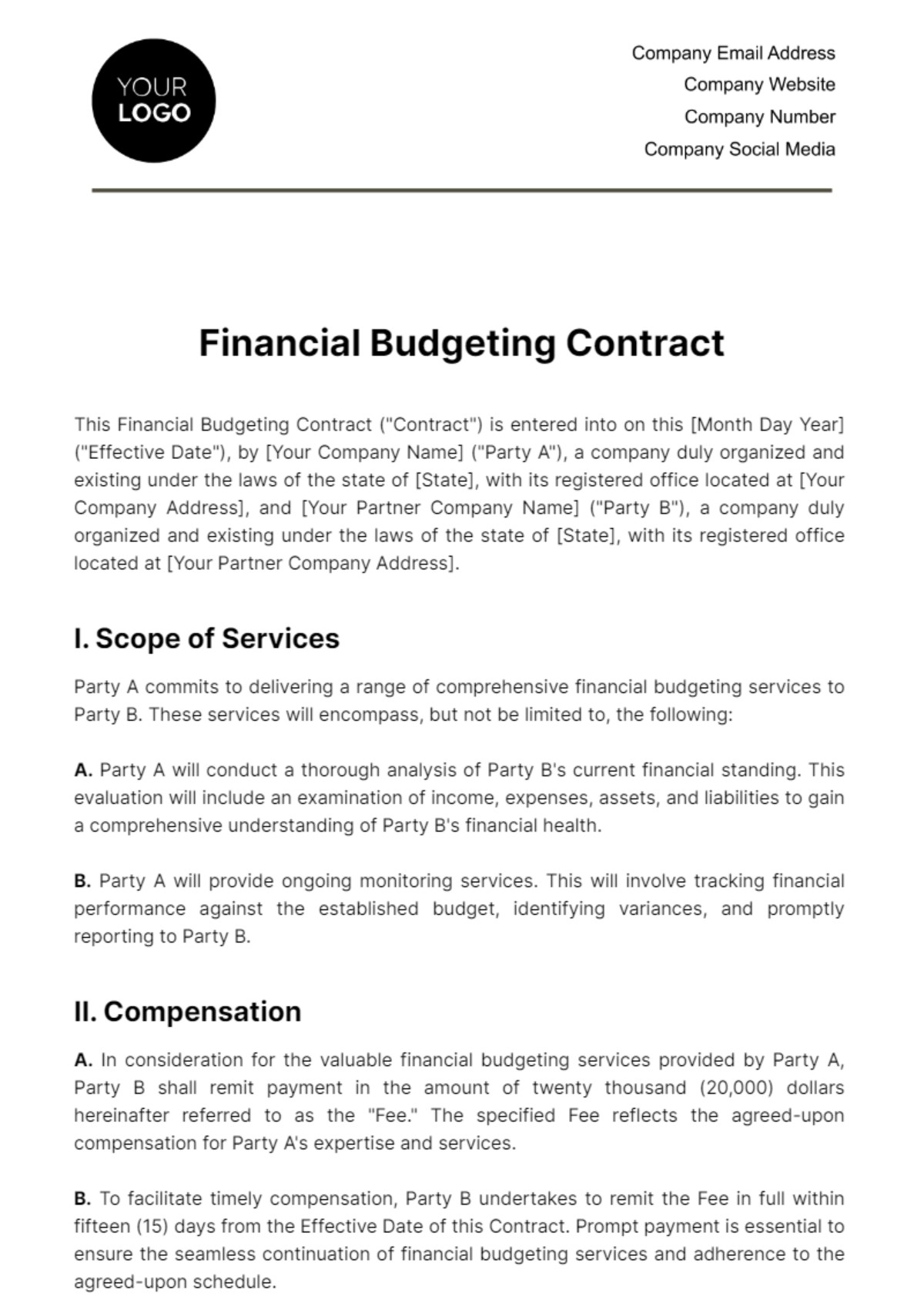Financial Cost Control Contract
This Financial Cost Control Contract ("Contract") is made and entered into on this [Insert Date], by and between [Company A Name], a [corporation/partnership/limited liability company] duly organized and existing under the laws of [State/Country of Incorporation], with its principal office at [Address] ("First Party"), and [Company B Name], a [corporation/partnership/limited liability company] duly organized and existing under the laws of [State/Country of Incorporation], with its principal office at [Address] ("Second Party").
Hereinafter, First Party and Second Party shall be referred to collectively as the "Parties" and individually as a "Party." This Contract is intended to establish a mutually beneficial agreement for the control and management of financial costs, aiming to enhance financial efficiency and accountability in the operations of both Parties.
WHEREAS, the Parties acknowledge the importance of effective financial management and the need for implementing robust cost control measures to ensure the economic stability and growth of their respective businesses;
WHEREAS, the Parties desire to enter into a collaborative arrangement to develop and implement strategies for stringent financial cost control;
WHEREAS, this Contract sets forth the terms under which the Parties will undertake these efforts, to achieve mutual financial benefits through disciplined cost management practices;
NOW, THEREFORE, in consideration of the mutual covenants contained herein, and with the intent to be legally bound, the Parties agree to adhere to the stipulations and provisions outlined in this Contract.
I. Definitions
A. "Cost Control" means the practice of identifying and reducing business expenses to increase profits, encompassing a range of financial management strategies including budgeting, tracking, and analyzing expenditures.
B. "Financial Management" is the strategic planning, organizing, directing, and controlling of financial undertakings in an organization or an institute. It also includes applying management principles to the financial assets of an organization, while playing a significant part in fiscal management.
C. "Fiscal Year" refers to the 12 months used for calculating annual financial statements in businesses and other organizations.
II. Objectives of Cost Reduction
The objectives of this Contract are centered around establishing a collaborative framework for effective financial cost control, with a focus on enhancing overall financial stability and efficiency for both Parties. The specific objectives are as follows:
A. Reduction of Unnecessary Expenditures: To systematically identify and eliminate or reduce non-essential expenditures across various departments and operations of both Parties, aiming to increase overall financial efficiency without compromising the quality of products or services.
B. Optimization of Budgetary Allocation: To review and optimize the allocation of budgets, ensuring that financial resources are utilized in the most efficient manner possible. This includes prioritizing expenditures that yield the greatest return on investment and align with strategic business objectives.
C. Enhancement of Financial Management Practices: To implement best practices in financial management, including improved budgeting techniques, expenditure tracking, and financial forecasting, to ensure better control over financial resources.
D. Collaborative Cost Reduction Initiatives: To engage in joint initiatives aimed at cost reduction, leveraging the combined expertise and resources of both Parties. These initiatives may include joint procurement strategies, shared resource utilization, and collaborative research and development efforts to reduce costs.
E. Continuous Improvement and Innovation: To foster a culture of continuous improvement and innovation in cost management, encouraging the exploration of new methods and technologies that can lead to more effective cost control and financial management.
III. Roles and Responsibilities
To ensure the effective implementation of the cost control objectives outlined in this Contract, the following roles and responsibilities are assigned to each Party:
A. First Party Responsibilities:
Conduct detailed financial analyses to identify potential areas for cost savings. Provide regular reports on financial performance, highlighting areas of concern and opportunity.
Take the lead in implementing agreed-upon cost control measures within their organization.
Maintain open lines of communication with the Second Party, ensuring coordination in joint cost control efforts.
B. Second Party Responsibilities:
Oversee budget allocations and ensure adherence to budgetary constraints. Implement measures to optimize budgetary efficiency.
Monitor ongoing expenses to ensure compliance with the cost control strategies. Report any deviations from the planned budget.
Share insights and best practices in cost management with the First Party, fostering a collaborative approach to cost reduction.
C. Joint Responsibilities:
Collaboratively develop and periodically review cost control strategies to ensure they remain effective and aligned with both Parties’ business objectives.
Participate in joint initiatives for cost reduction, such as combined procurement or shared services, to leverage economies of scale.
Regularly evaluate the effectiveness of the cost control measures and make necessary adjustments to strategies and tactics.
D. Accountability Mechanisms: The joint committee will meet quarterly to review progress against targets. Each Party will designate a representative responsible for providing updates and addressing issues related to the Contract. In the event of not meeting the agreed-upon targets, both Parties will engage in a review process to identify obstacles and revise strategies accordingly.
IV. Cost Reduction Strategies and Methods
To achieve the objectives of effective financial cost control, the following strategies and methods will be employed by the Parties:
A. Expenditure Analysis and Reduction: Conduct comprehensive analyses of current expenditures to identify potential areas for cost savings. Implement targeted reduction strategies, focusing on areas with the highest expenditure and the greatest potential for savings.
B. Budget Optimization and Enforcement: Develop and enforce strict budget guidelines, ensuring all departments adhere to allocated budgets. Regularly review and adjust budgets based on performance and changing business needs.
C. Procurement Strategy Refinement: Reassess current procurement strategies to identify opportunities for cost savings, such as bulk purchasing or renegotiating supplier contracts. Implement centralized procurement to leverage economies of scale.
D. Resource Utilization Efficiency: Optimize the use of resources, including human resources, materials, and equipment, to reduce waste and unnecessary expenses. Encourage practices that promote efficiency, such as energy-saving measures and recycling.
E. Technology and Automation: Invest in technology and automation to streamline operations, reduce manual labor, and cut costs in the long term. Regularly evaluate new technological solutions for potential cost-saving benefits.
F. Training and Employee Engagement: Provide training to employees on cost control practices and the importance of budget adherence. Encourage employee participation in identifying cost-saving opportunities.
G. Regular Financial Audits: Conduct regular internal audits to ensure compliance with cost control measures and identify areas for improvement.
H. Performance Monitoring and Reporting: Establish key performance indicators (KPIs) to monitor the effectiveness of cost control strategies. Regularly report on these KPIs to assess progress and make data-driven decisions for further cost reductions.
V. Implementation Plan
To ensure the successful execution of the cost control strategies and methods, a structured implementation plan is outlined as follows:
A. Initial Assessment and Planning:
Conduct a full audit of current expenses and operations (Month 1).
Develop a detailed plan based on the strategies and methods agreed upon (Month 2).
B. Execution Phase:
Begin implementation of process optimization and technology integration initiatives (Months 3-6).
Initiate supplier negotiations and order consolidation (Month 4).
Launch energy efficiency improvements (Month 5).
C. Monitoring and Adjustment:
Regularly review the progress of each initiative and adjust strategies as needed (Monthly from Month 7).
Quarterly evaluation against benchmarks and ROI targets.
D. Milestones:
Completion of the initial audit and planning phase (End of Month 2).
Achievement of the first phase of cost reductions (End of Month 6).
Review and adjustment of strategies (End of Month 9).
Final evaluation and report on the effectiveness of the cost reduction plan (End of Year 1).
VI. Monitoring and Reporting
A. Monitoring Framework: A structured monitoring framework will be established to oversee the implementation and progress of the cost reduction strategies. This will include setting up a joint monitoring committee comprising representatives from both Parties, responsible for tracking progress, assessing the effectiveness of initiatives, and ensuring alignment with the agreed objectives.
B. Key Performance Indicators (KPIs): Specific Key Performance Indicators (KPIs) will be defined to measure the success of cost reduction efforts. These KPIs will include metrics such as percentage reduction in operational costs, efficiency improvements, and ROI on cost-saving measures.
C. Regular Progress Reviews: The joint monitoring committee will conduct regular progress review meetings every quarter. During these meetings, the implementation of strategies, achievement of KPIs, and any challenges or bottlenecks will be discussed.
D. Reporting Requirements: Detailed progress reports will be prepared by the monitoring committee after each review meeting. These reports will outline the status of cost reduction efforts, KPI achievements, and any recommended adjustments to strategies. The First Party will be responsible for consolidating these progress reports and presenting them to the Second Party.
E. Transparency and Communication: Both Parties commit to maintaining a high level of transparency throughout the monitoring process. All relevant data and findings will be openly shared between the Parties. Regular communication channels will be established to ensure ongoing collaboration and timely resolution of any issues that arise during the implementation phase.
F. Annual Performance Evaluation: An annual performance evaluation will be conducted to assess the overall effectiveness of the cost reduction initiatives. This evaluation will include a comprehensive review of the year’s progress, an analysis of the achievement of KPIs, and recommendations for future improvements.
VII. Financial Provisions
The Financial Provisions of this Contract outline the financial responsibilities and arrangements agreed upon by the Parties to support the cost control initiatives. These provisions include:
A. Budget Allocation for Cost Control Initiatives: The Parties agree to allocate a specific budget for implementing the cost control measures. This budget will cover expenses related to technology upgrades, process improvements, and other related activities. The total budget allocated for these initiatives will be 5% of the total project cost, with each Party contributing an equal share.
B. Funding and Financial Contributions: Financial contributions for the initiatives under this Contract shall be shared between the Parties. The First Party shall contribute 50%, and the Second Party shall contribute 50%. These contributions are subject to adjustment based on the actual cost incurred during the implementation phase.
C. Cost Monitoring and Reporting: Regular monitoring of expenditures related to the cost control initiatives will be conducted to ensure adherence to the allocated budget. A financial report detailing the expenditures and savings achieved will be prepared and shared between the Parties every quarter.
D. Reallocation and Adjustment of Budget: In case of underutilization or over-expenditure, the budget may be reallocated or adjusted with mutual consent of both Parties. This ensures that the financial resources are utilized optimally and efficiently.
E. Audit and Transparency: An annual audit of the financial transactions related to the cost control initiatives will be conducted by an independent auditor to ensure transparency and accountability. Both Parties will have access to financial records and reports related to the cost control initiatives for review and audit purposes.
F. Disbursement of Savings: Any financial savings achieved through the cost control initiatives beyond the projected targets will be assessed at the end of the fiscal year. The distribution of these savings will be decided upon mutually by the Parties, which may include reinvestment into further cost control measures or other mutually agreed purposes.
VIII. Confidentiality Clause
A. Obligation of Confidentiality: Both Parties agree to maintain the confidentiality of all information related to the cost control initiatives, financial data, and any other proprietary information exchanged during this Contract. Confidential information shall not be disclosed to any third parties without prior written consent from the disclosing Party.
B. Scope of Confidential Information: Confidential information includes, but is not limited to, financial records, cost control strategies, business processes, and any documents or reports generated under this Contract.
C. Duration of Confidentiality: The obligation to maintain confidentiality shall persist for five years following the termination or expiry of this Contract, ensuring long-term protection of sensitive information.
D. Exceptions to Confidentiality: Information that is publicly known, independently developed, or rightfully received from third parties outside the scope of this Contract shall not be considered confidential.
IX. Compliance and Legal Considerations
A. Adherence to Laws and Regulations: The Parties commit to comply with all applicable laws and regulations in the execution of their duties under this Contract, including financial regulations, data protection laws, and industry standards.
B. Legal Disputes: In the event of a dispute arising from this Contract, the Parties shall first attempt to resolve the matter through amicable negotiations. If resolution cannot be achieved, the dispute shall be submitted to mediation before pursuing formal legal action. Legal proceedings, if necessary, shall be conducted within the jurisdiction of the State of New York, US, ensuring that any legal matters are handled in a predetermined legal framework.
C. Amendments and Modifications: Any modifications or amendments to this Contract must be made in writing and signed by both Parties, ensuring mutual agreement on any changes.
D. Severability: If any provision of this Contract is found to be invalid or unenforceable, the remaining provisions will continue in full force and effect. This ensures that the Contract remains viable even if a specific clause is invalidated.
Amendment and Termination
E. Amendment: This Contract may only be amended or modified through a written document, mutually agreed upon and signed by both Parties. Any such amendments shall become effective as stipulated in the amendment document.
D. Termination: Either Party may terminate this Contract with a 30-day written notice to the other Party. Grounds for termination include material breach of contract terms, failure to meet performance standards, or insolvency of either Party. Upon termination, all ongoing initiatives and activities under this Contract shall be wound down in an orderly manner, respecting the terms agreed upon in this section.
X. Force Majeure
A. Definition: "Force Majeure" refers to unforeseeable circumstances that prevent a Party from fulfilling its contractual obligations, such as natural disasters, war, strikes, or governmental actions.
B. Effect of Force Majeure: The affected Party must promptly notify the other Party of the Force Majeure event. During the period of such an event, the affected Party's contractual obligations shall be suspended. Once the event concludes, the affected Party should resume the fulfillment of their contractual duties as soon as reasonably possible.
XI. Dispute Resolution
A. Negotiation and Mediation: The Parties agree to first attempt to resolve any disputes through direct negotiation. If negotiation fails, mediation may be sought as an alternative to resolve the dispute amicably. A neutral third-party mediator will be appointed mutually by the Parties to facilitate the mediation process.
B. Binding Arbitration: If mediation is unsuccessful, the dispute will be resolved through binding arbitration. The decision of the arbitrator will be final and binding on both Parties.
C. Legal Recourse: Only after the above steps have been exhausted without resolution may either Party seek legal recourse in a court of competent jurisdiction.
IN WITNESS WHEREOF, the Parties hereto have executed this Financial Cost Control Contract as of the Effective Date.
First Party

[Name]
[Title]
[Date]
Second Party

[Name]
[Title]
[Date]
